|
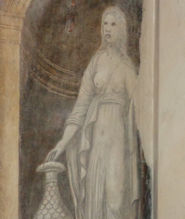 Dwight Peck's personal website Dwight Peck's personal website
The Veneto region in May 2017
A restful week around the Euganean Hills
You may not find this terribly rewarding unless you're included here, so this is a good time for casual and random browsers to turn back before they get too caught up in the sweep and majesty of the proceedings and can't let go.
The Villa dei Vescovi, Torreglia
We were visiting the Veneto region north of Venice earlier this spring, and now we're back to see some more of what we missed farther south.

The Villa dei Vescovi, 18 May 2017. The Bishops' Palace is well placed for peace and quiet in the Euganean Hills near Torreglia, specifically in a district of the little town called Luvigliano. At the then-Bishop's instance, the curia of the diocese of Padua began construction in 1535, under the direction of the learned Venetian Alviso Cornaro, and it was completed in 1542 -- in its later stages the Bishop was receiving the advice of Giulio Romano as well, who was then based in nearby Mantua.
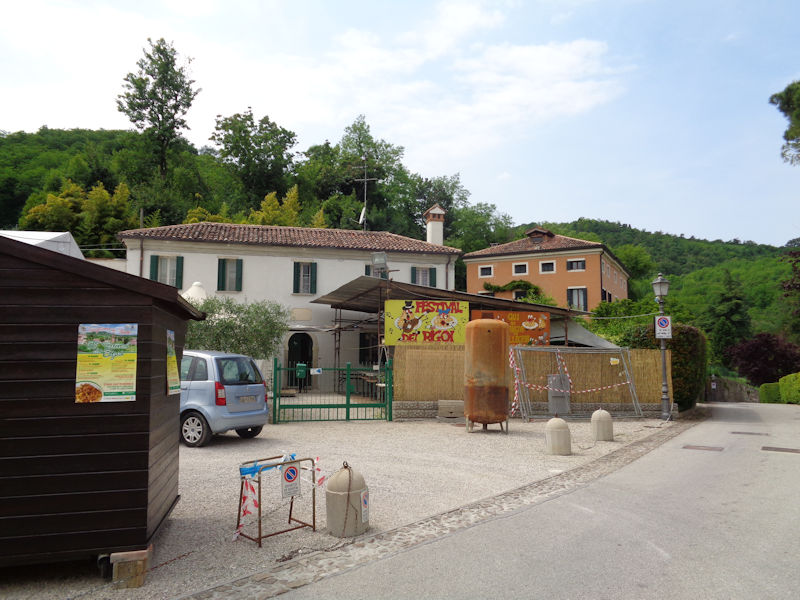
Something for the kids, evidently, in front of the Villa. Luvigliano is nestled in the northeastern part of the Parco Regionale dei Colli Euganei, just 15km southwest of central Padua, and 14km up from Este.
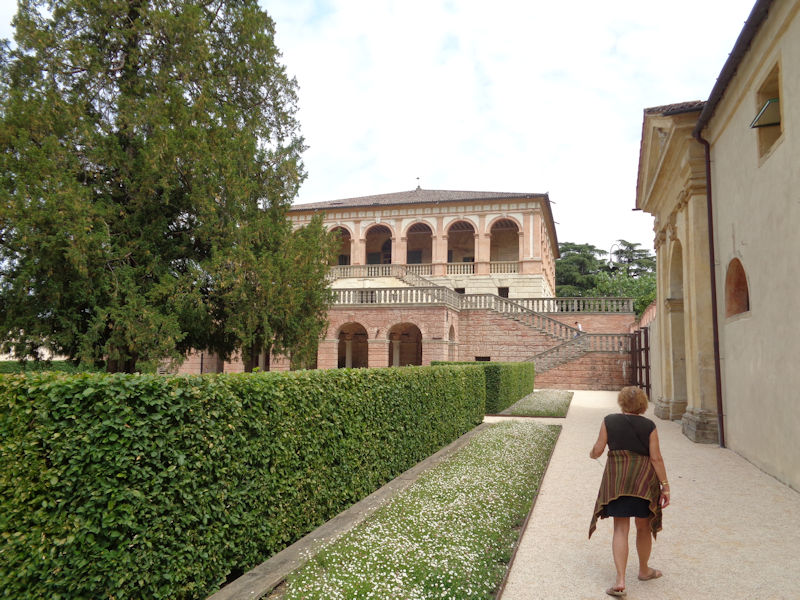
There's a nominal entrance fee, payable just here on the right in the gift shop and a wine shop for the Vignalta label based in Arquà Petrarca, in which the wines of the Villa participate.
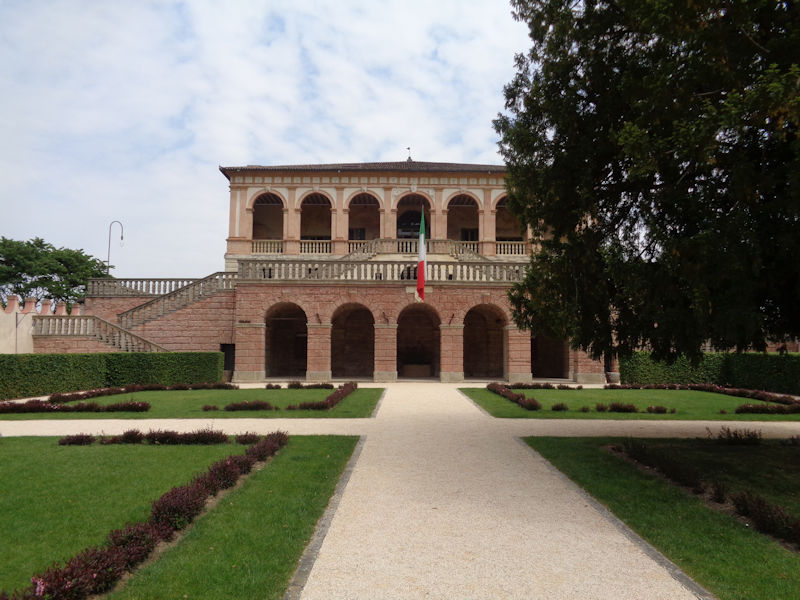
The original architect chosen to design the Padovan bishops' holiday home was Giovanni Maria Falconetto of Verona and Padua who, then near the end of his life, had already created for Alvise Cornaro the Loggia Cornaro in Padua and the Villa Cornaro (now called Villa Benvenuti) overlooking Este.

It was Falconetto's pupil Andrea da Valle who added the wonderful front staircases in the 1560s, and Vicenzo Scamuzzo, a Padua/Venice luminary who originally organized the villa's symbiosis with its gardens in the early 17th century.

The Bishop of Padua at the time of its inception was the Cardinal/Bishop Francesco Pisani from the important Venetian family, named a Cardinal/Deacon in 1517 at the age of 23 and Bishop of Padua in 1524, and Pope Clement's companion in fleeing down the secret passageway from the Vatican Palace to the Castel Sant'Angelo fortress during the Sack of Rome in May 1527, walled up in there until December; in fact, he spent 18 months in house arrest in Naples as the Emperor's hostage for the Pope's good behavior, during which time he appointed his 12-year-old nephew Giovanni Pisani to serve as Bishop of Padua in his absence.

The villa was sited on top of a medieval settlement, over which had been built a first bishops' residence in the 13th century, chiefly to provide a fortified base for overseeing the agricultural work of the Church's vast demesne of Luvigliano, which had been donated by the imperial court before the year 1000. In the mid- to late-15th century the Bishop Iacopo Zeno ordered up a new residence here, on what was then understood to be the site of Livy's famous Roman villa, but that building had deteriorated sorely by the 1530s, thus Bishop Pisani's decision to start over.

Falconetto's original design, classically inspired, had an open courtyard at the centre like a Roman house's impluvium, and had its entrance facing south with only internal staircases to the upper floors. Years later, in about 1560 Bishop Pisani recruited Andrea da Valle, a student of Falconetto's who had created a new choir for the Duomo of Padua in 1551 on a design by Michelangelo Buonarroti, to perform a radical transformation of the building, orienting the main entrance to the west (as above) and connecting a courtyard garden to the first floor, or piano nobile, with these external staircases.

The western staircase leads up to a beautiful loggia the length of the building -- so does the eastern staircase, added by Vincenzo Scamozzi, a student of Palladio, in the 1560s, under the direction of Bishop Francesco Pisani's nephew, Alvise (Luigi) Pisani, also Bishop of Padua, and then his other nephew, Federico Cornaro, also Bishop of Padua (six more Cornaros were to follow, hanging up the Paduan bishop's mitre only in 1722).

The western loggia, with original frescoes by Lambert Sustris

We're told that the Villa was a meeting place for a refined circle of Venetian-Paduan intellectuals, scientists, and artists revolving around the Pisanis and Cornaros, including Pietro Bembo, the classical humanist and enlightened cardinal, promoter of Petrarch and his Florentine prose as a model for all Italy, and lover of Lucrezia Borgia.
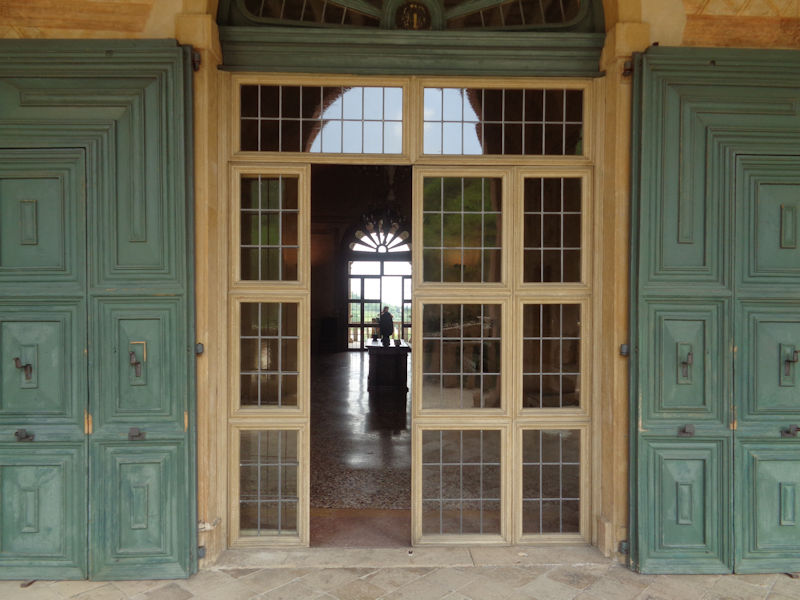
The entrance to the interior, now facing west, with a view of the loggia on the eastern side
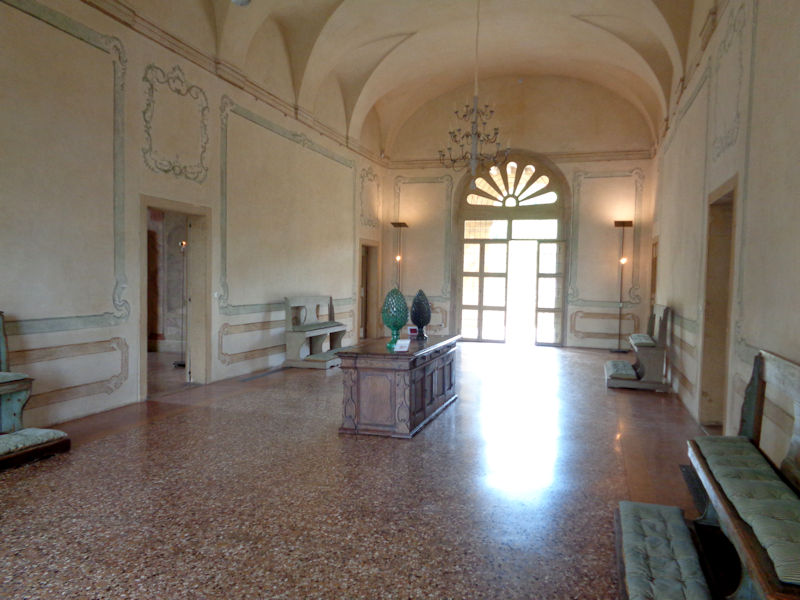
The salon in the centre of the building
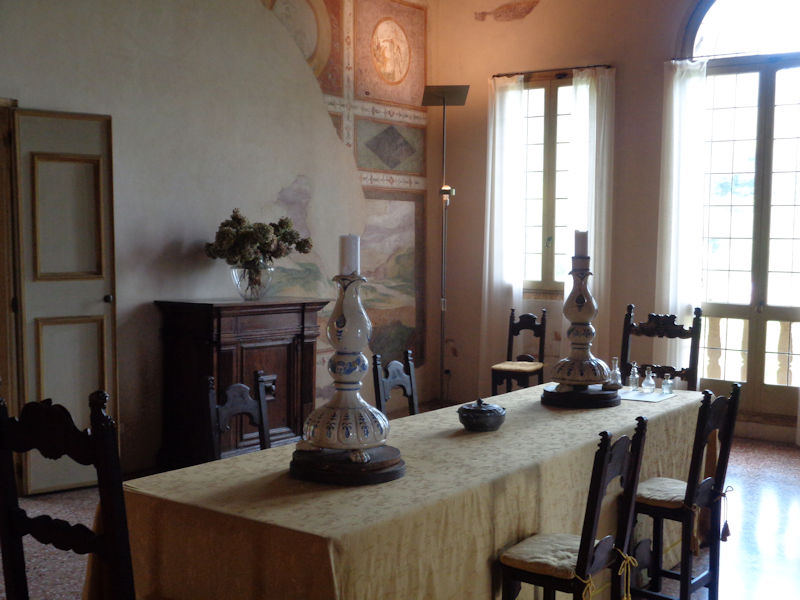
The dining room
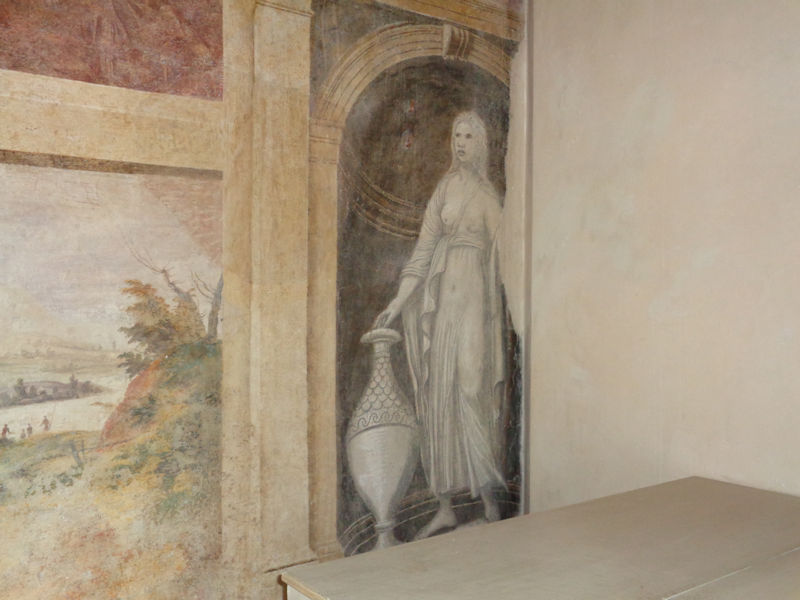
A ghostly apparition to help keep the bishops and their guests sober

The bathroom off the dining room
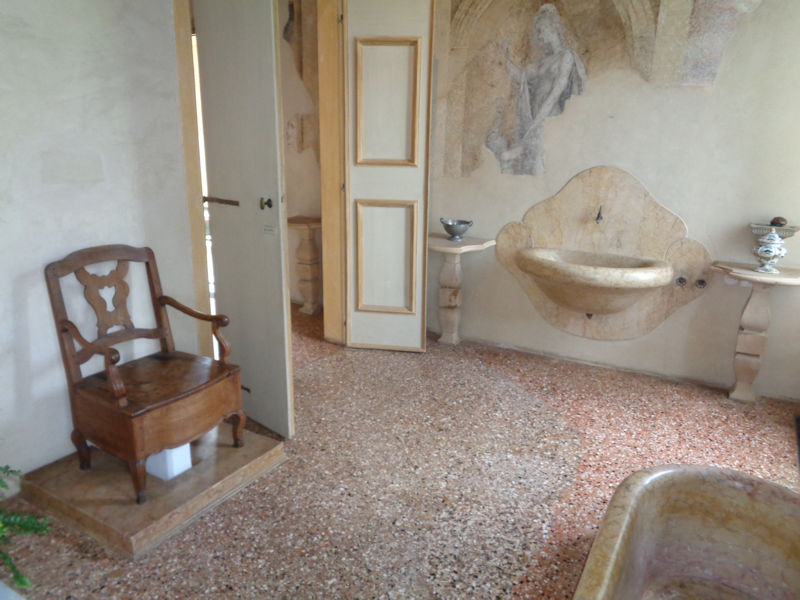
Well, even bishops have to, you know . . .
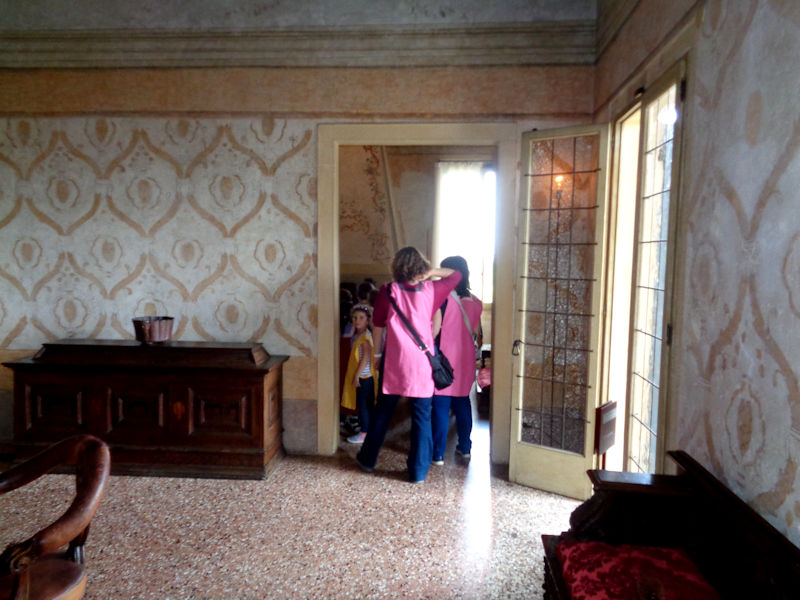
A school group with very neat little kids
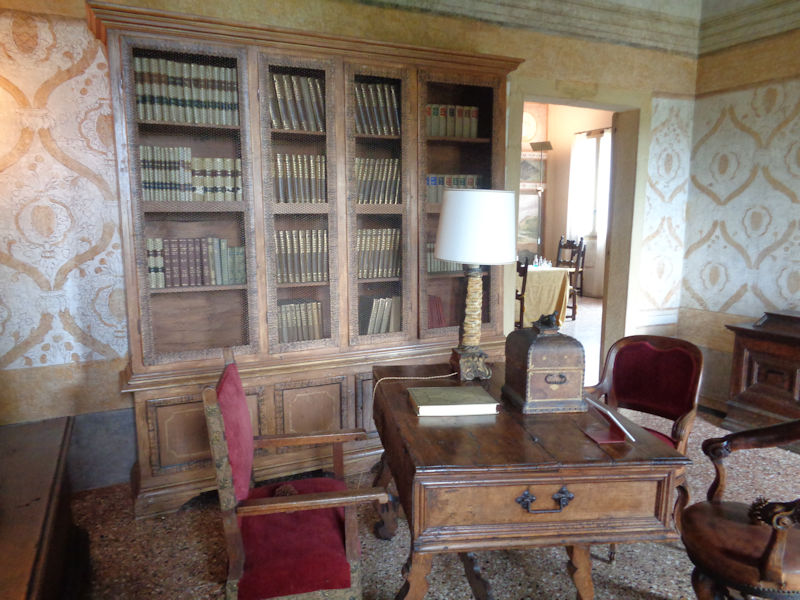
This is labeled 'the consulting room'.
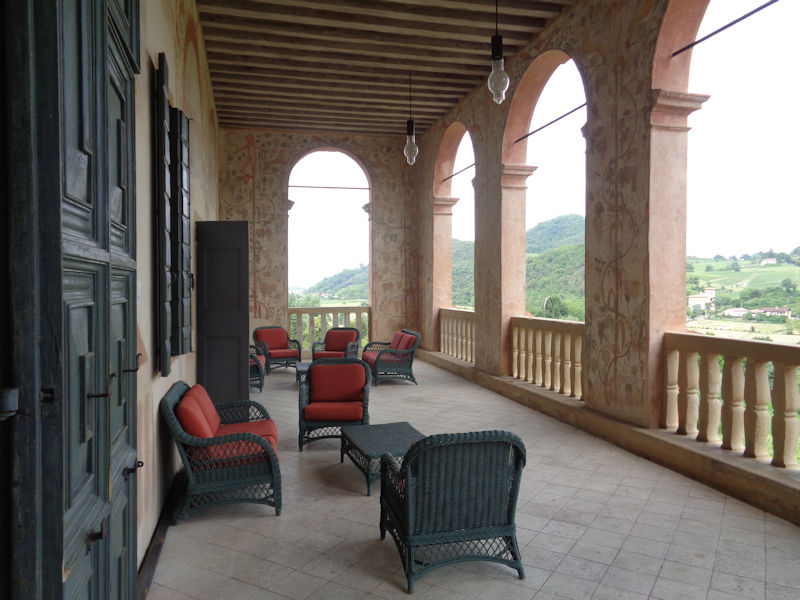
The eastern loggia, with frescoes also by Sustris. Lambert Sustris was born in Amsterdam in about 1515, was in Rome by about 1530 and in the Venice area by 1535, and a friend of Pietro Aretino. There, working with Titian and Francesco Salviati, he "incorporated Salviati's sophisticated, linear Florentine Mannerism into his own colorful, Venetian-influenced style" and in 1542-1543 painted frescoes for several villas around Padua, including this one. After which he apparently accompanied Titian to the court of Emperor Charles V in Augsburg.
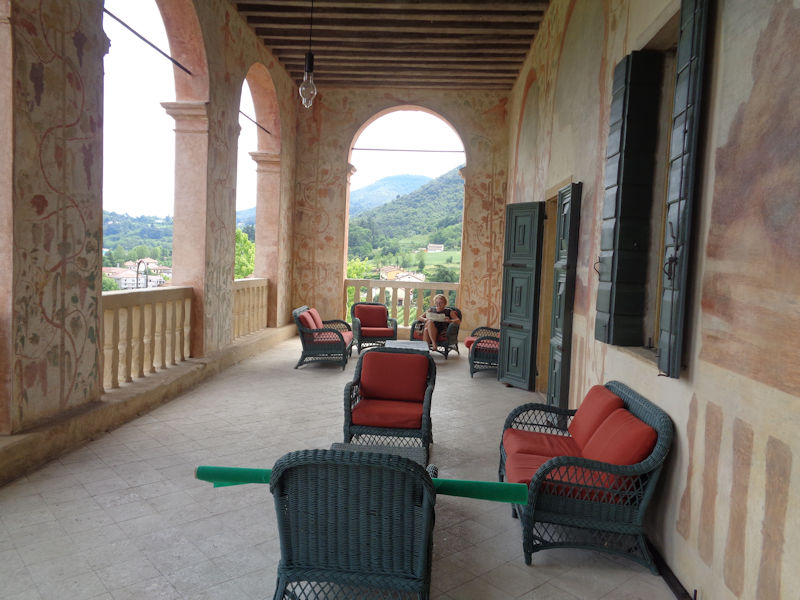
Kristin and the Villa's brochure
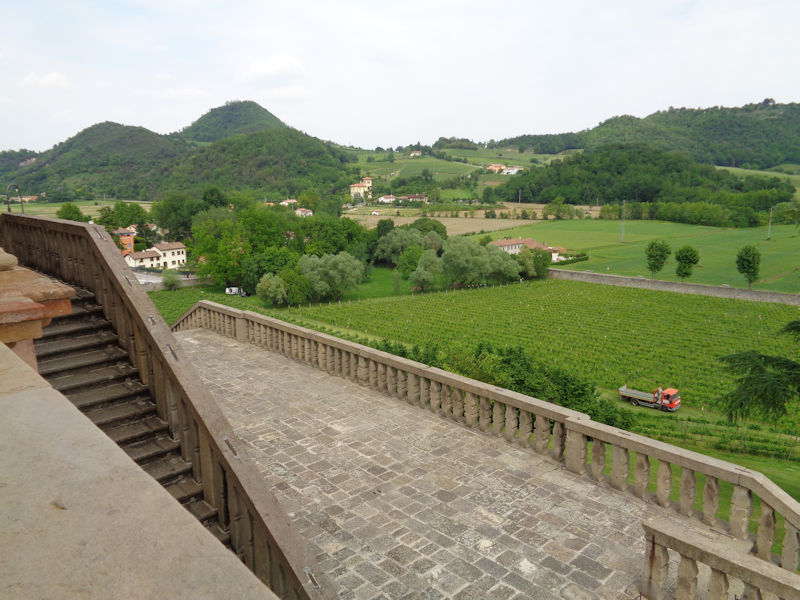
Vineyards below the eastern staircase (the Villa is proud of its wines)

The beautiful eastern loggia

This is called the 'Fireplace Room'.

And this is called the 'Figure all'Antica Room' (lots of ancients, not many of them biblical)

In fact, none of them seem to be biblical. Note all the pinecone symbolism, which means . . . erm.
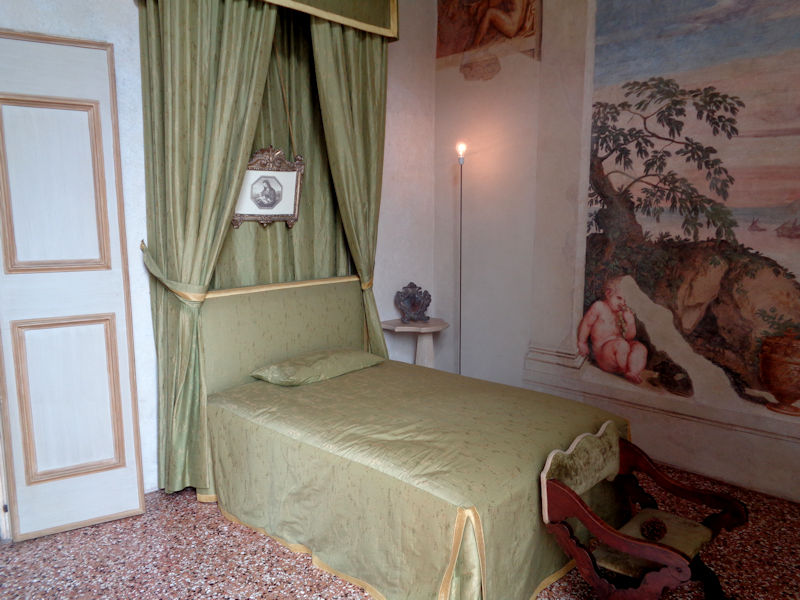
This is the Putto Room.

Lambert Sustris was known especially for his landscapes.
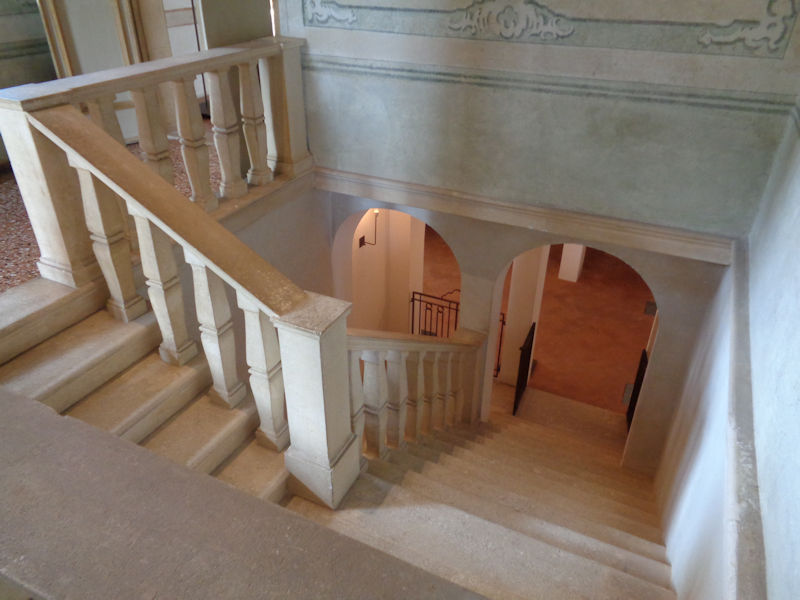
Down from the piano nobile to the ground floor
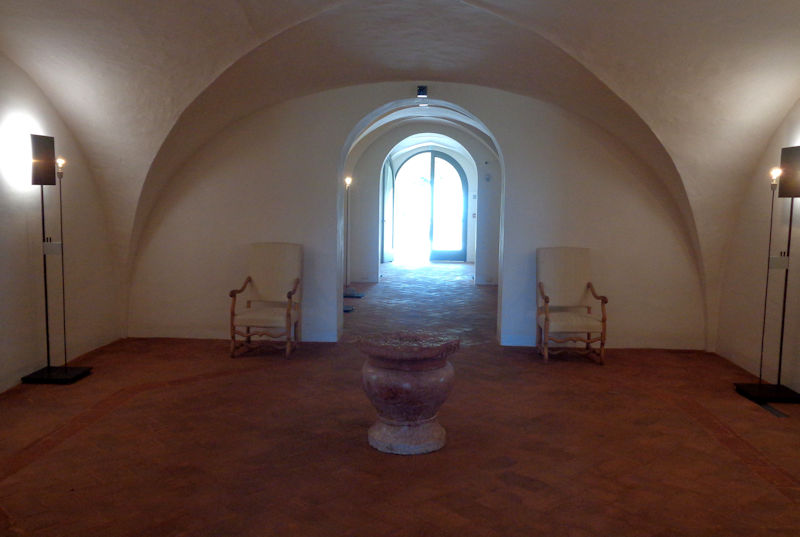
Another 'look-through' central salon
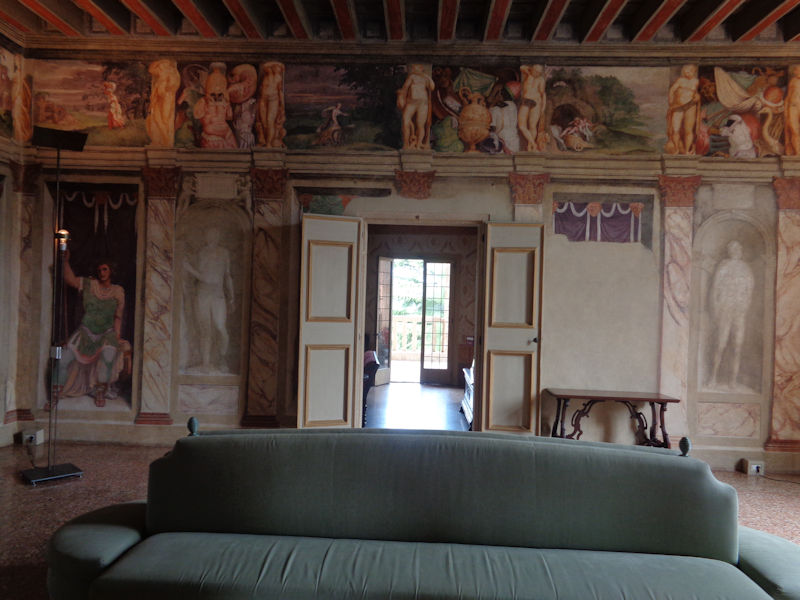
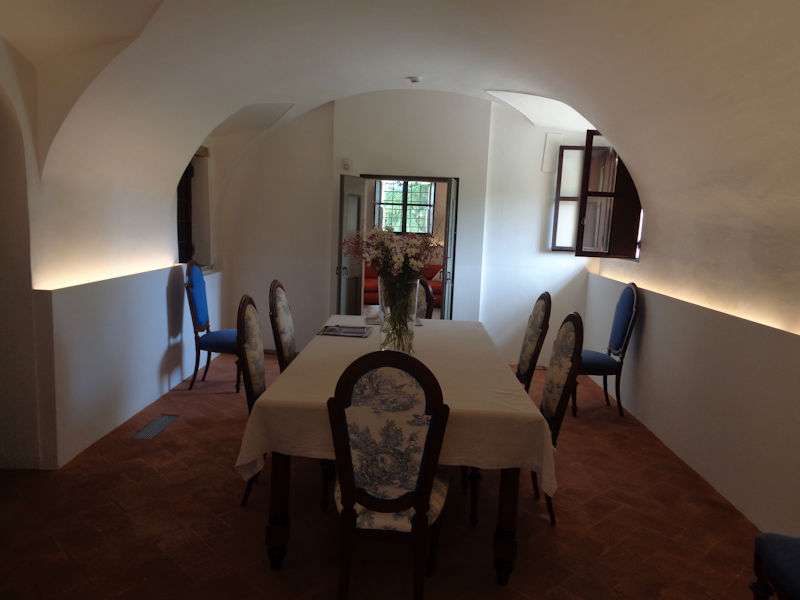
A meeting room?
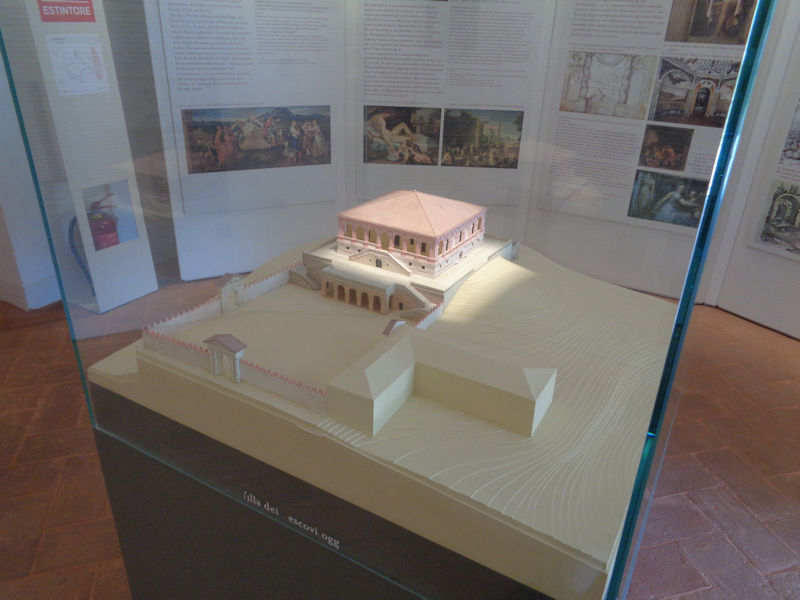
A model of the villa in a room filled with information panels . . .
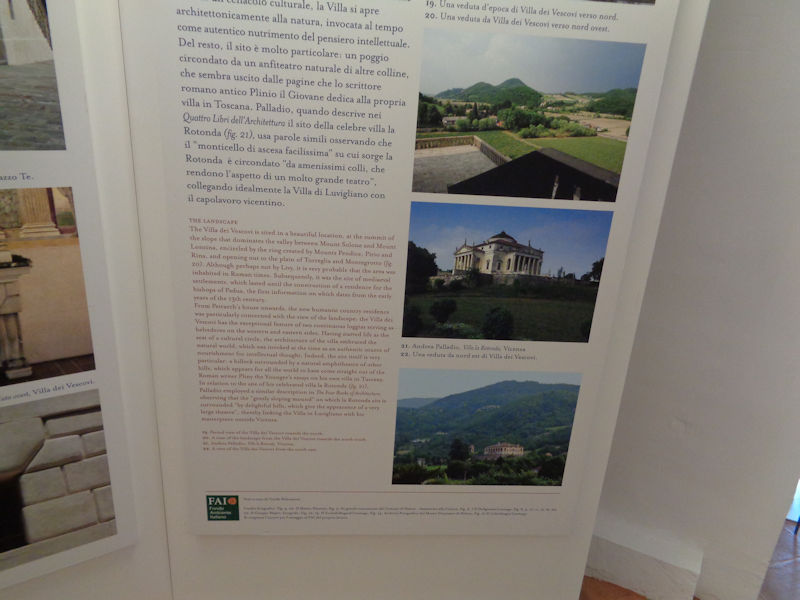
. . . like this (in Italian and English)
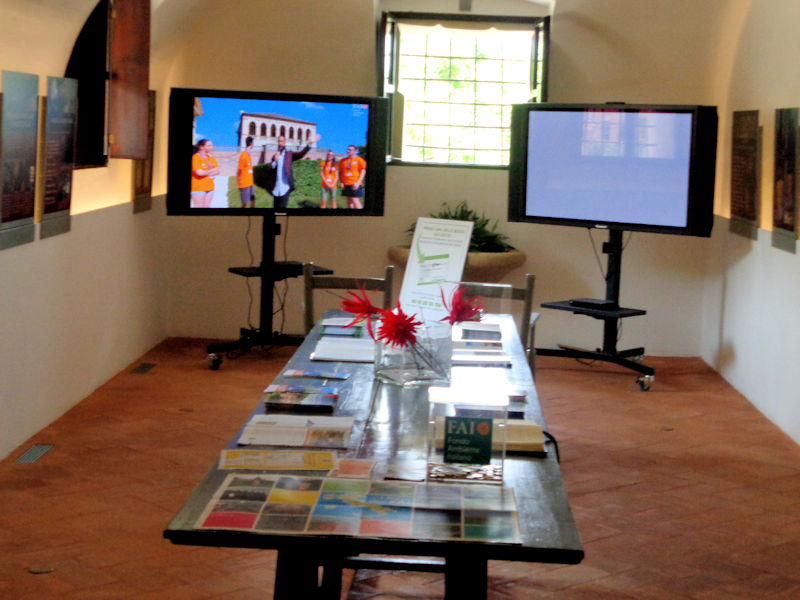
An exhibition of materials and properties of the FAI, the Fondo Ambiente Italiano, the Italian equivalent of the National Trust
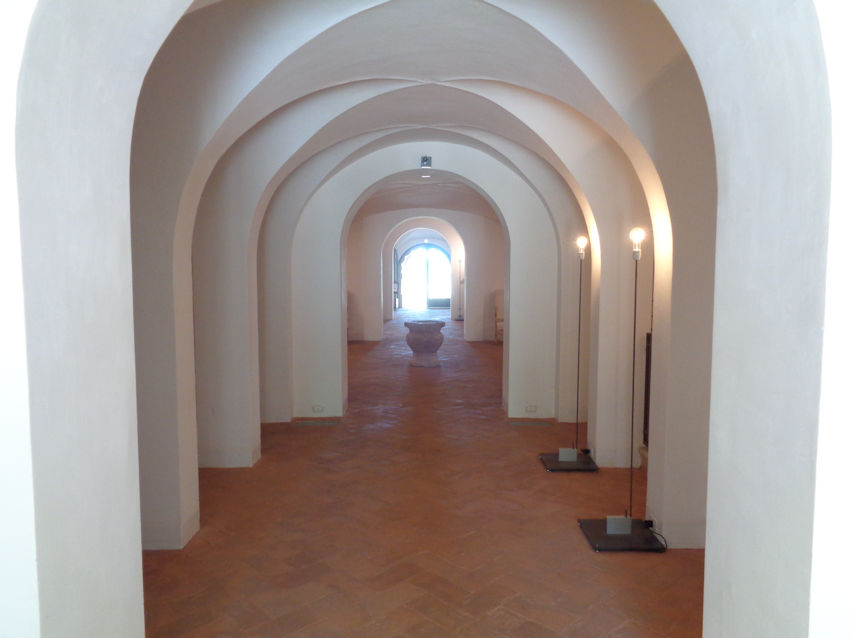
A hall of symmetries

An ancillary building, with ticket office, wine shop, etc., and the Parrocchia di Luvigliano church in the background
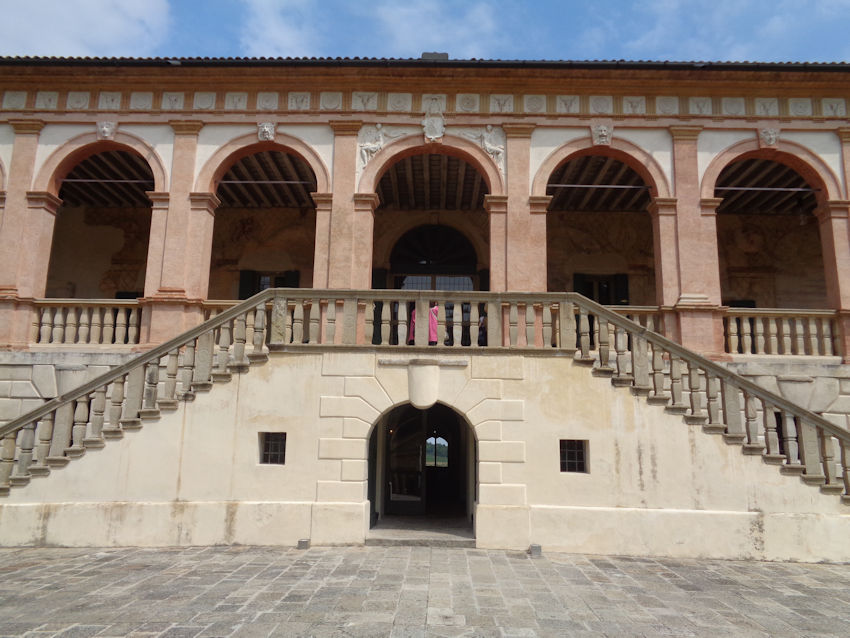
The amazing series of staircases from the garden courtyard to this terrace and thence to the piano nobile

In 1910, the then-bishop decided to rent the villa out to anyone who would undertake what were by then extremely necessary restorations, but it passed through a number of temporary uses, like a residence for WW2 evacuees, for Discalced Carmelite nuns, for 'spiritual exercises' by potential priests. In 1962, however, it was sold off (proceeds to charity!) to a Milanese intellectual took the job of restoration of the structure and frescoes seriously, and in 2005 his widow and son donated it to the FAI. Who made some further restorations before opening it up to the public. Like us.
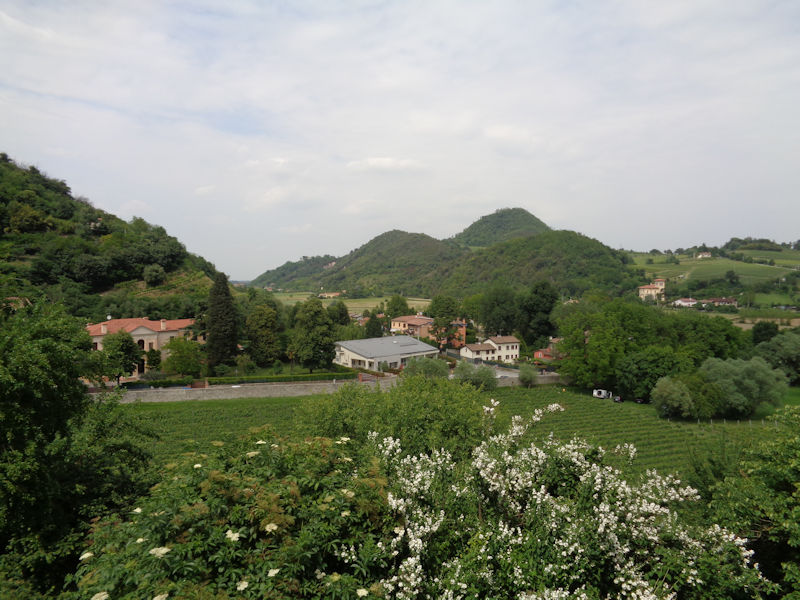
The local countryside in the Euganean Hills

A Doric gateway for the vineyards

A mixed message -- 'have fun, kids, but stay away from the nasty tank'

A last look from the southeast
Next: the Castello del Catajo
       
    

 Feedback
and suggestions are welcome if positive, resented if negative, Feedback
and suggestions are welcome if positive, resented if negative,  .
All rights reserved, all wrongs avenged. Posted 9 August 2017. .
All rights reserved, all wrongs avenged. Posted 9 August 2017.
|
 Dwight Peck's personal website
Dwight Peck's personal website






















































